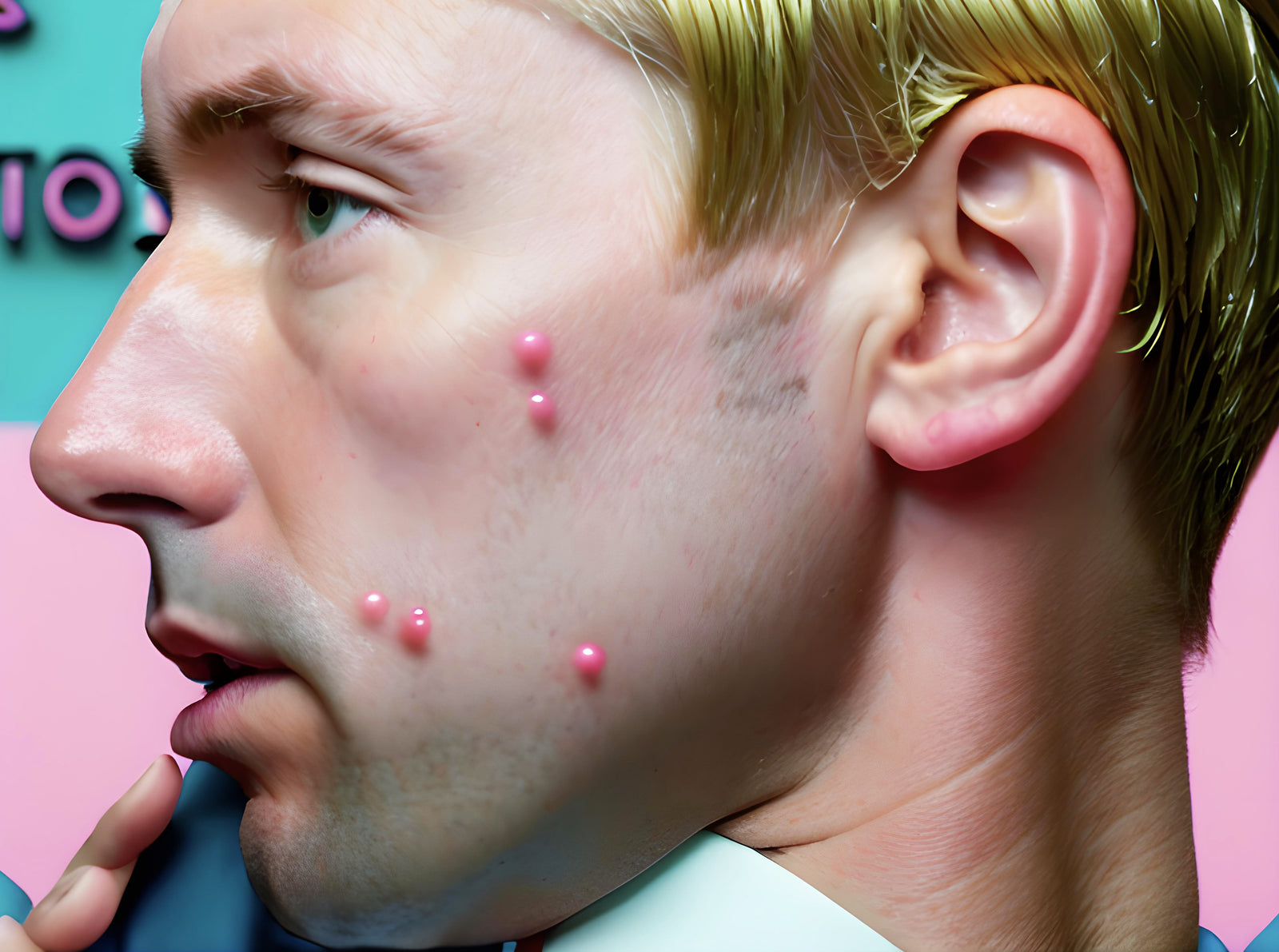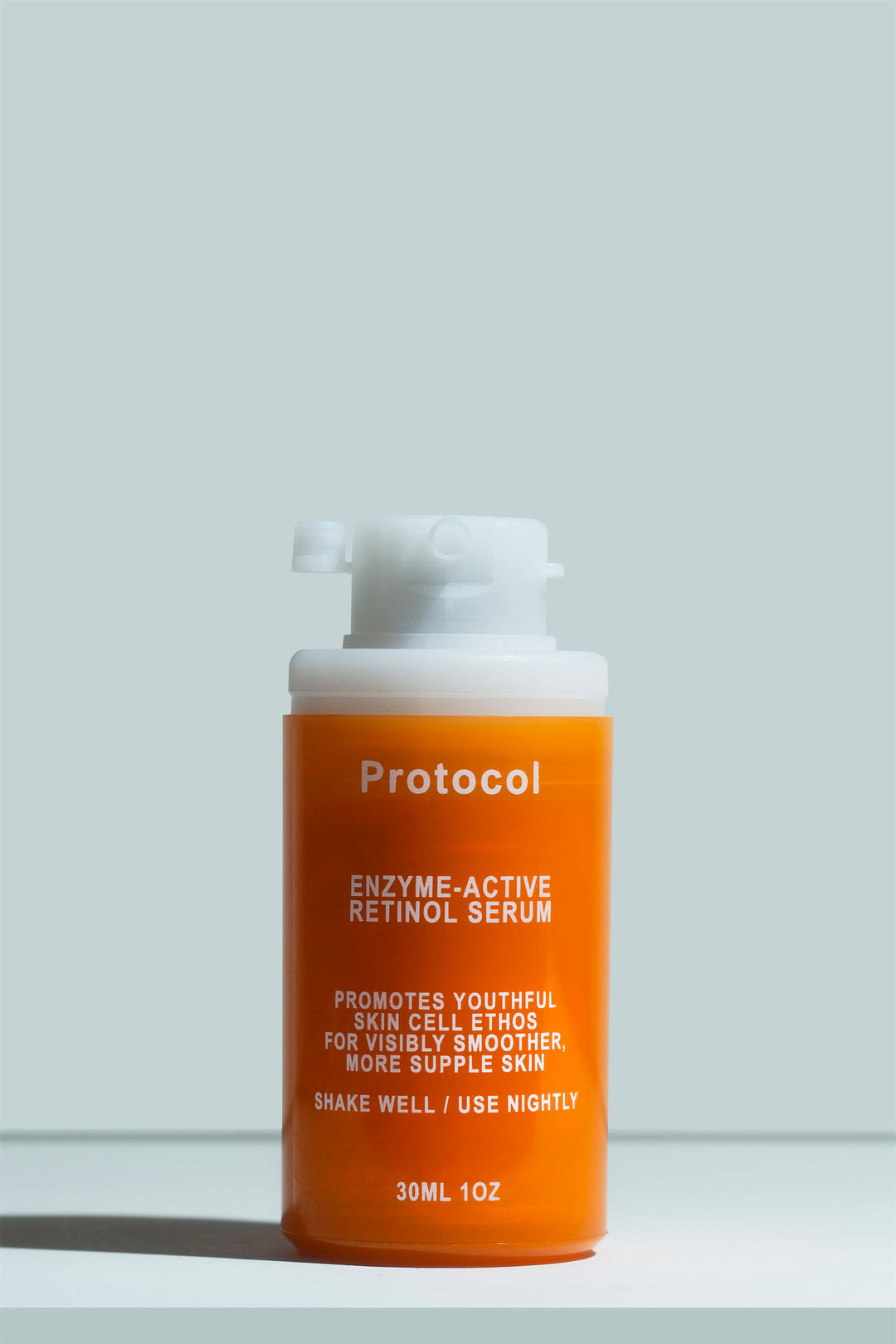How to Get Rid of Pimples


Pimples are the key symptom of acne, the world’s most common skin condition. Most people will have acne at some point in their life, so it’s always good to know how to get rid of pimples when they pop up. Dermatologists have made great advances in dealing with the condition as a whole, but treating individual pimples is a different story.
So what to do when a cyst or pustule suddenly shows up? Our suggestions will help you clear away all sorts of breakouts, including a few tips for getting rid of pimples overnight - or at least making it seem like they’re gone.
Why do pimples form?
Pimples are blemishes that form when a hair follicle or pore gets plugged up with a sticky mixture of dead skin cells and sebum. As the clogged follicle gets infected with an abundance of acne bacteria, the resulting inflammation will cause different types of pimples to form, such as pustules, papules, and cysts.
If the hair follicle remains open and the mixture gets oxidized but not inflamed, you end up with a blackhead. If the follicle is covered with skin and slightly protruding but not otherwise inflamed, it’s a white head.
That's the actual progression of pimple formation, but acne itself is a complex skin condition that's impacted by both external and internal factors. Dealing with acne-prone skin can be a life-long struggle, and it may require seeing a doctor for treatment. Individual pimples, on the other hand, require immediate treatment before they have a chance to leave behind a mark.
How to get rid of pimples safely
Whether you have a single pimple or a nasty breakout, here are the steps to getting rid of it in a safe manner, to speed healing and prevent future breakouts.
1. Cleanse
Keep your skin clean to remove excess bacteria and oils that’ll prevent acne treatments from penetrating. If you’re already using leave-on anti-acne products, opt for a gentle cleanser with a low pH, in order to facilitate a more resilient skin barrier.
You can also opt for a treatment cleanser with ingredients that will help target your blemishes, like salicylic acid, benzoyl peroxide, or glycolic acid (which you can find in our double AHA cleanser). When used in a cleanser, these ingredients can reduce breakouts over time. Because they wash off, they’re less likely to irritate your skin, so they’re ideal for regular use as part of a preventative approach.
2. Spot treat
Most spot treatments can help get rid of pimples by encouraging skin cell renewal, largely through chemical exfoliation. They help the skin push out the damaged and pore-clogging cells, allowing for faster healing and a lower risk of pigmentation.
Salicylic acid is the most common ingredient for this purpose since it is oil-soluble and gentle. Salicylic acid is ideal for blackheads and whiteheads since it can exfoliate within the pore. Retinoids can also help - they trigger skin renewal in a slightly different way, encouraging new cell proliferation deeper within the skin. They might be a better option for pimples deeper within the skin.
Finally, benzoyl peroxide is another very common treatment, but it can be quite drying and irritating to the skin. It kills the acne bacteria very effectively without causing resistance, so it’s often recommended for moderate to severe acne treatment. While we’re big fans, we find that its antibacterial effect often does more for long-term prevention than short-term pimple treatment.
3. Protect with a pimple patch
If you have pustules or popped pimples, applying pimple patches will protect the skin and create a better environment for healing. They don’t come off easily, and their smooth surface helps prevent picking or popping.
There are even microdart patches that combine acne treatments like salicylic acid with tiny spikes that lightly puncture the pimple while keeping it sealed. Hydrocolloid-based patches are ideal for small, surface-level papules and pustules, while microdart patches are great for slightly deeper acne.
If you do use a pimple patch, remember to apply it to untreated (but clean!) skin. Applying pimple patches over active acne treatments can occlude the skin too much, potentially leading to skin damage, while applying them over moisturizer can prevent adhesion.
That said, be very careful when removing pimple patches. The stickier the pimple patch, the likelier it is that it will irritate your skin when you remove it, leaving your blemished areas looking a little more red.
4. Keep moisturizing
There’s a misconception that depriving pimples of moisture will help them fade. In reality, those with acne-prone skin often experience higher rates of transepidermal water loss.
When the skin is dry and dehydrated, it has a harder time shedding dead skin cells or resisting bacterial infection. This can directly contribute to pimple formation. In other words, don’t skip moisturizing!
Keep your skin strong and hydrated with a light, non-comedogenic moisturizer like Water Lock. It's a phenomenal option thanks to its perfect blend of breathable, lightweight occlusives that keep water in the skin without promoting bacterial proliferation.
5. Be consistent
Finally, even when you have a bad breakout, it’s important to stay gentle and consistent with a skincare routine for acne-prone skin. Don’t change your products on a daily or weekly basis just because there’s a breakout. The only exception is your spot treatment or pimple patches.
That’s not to say you should keep using products that break you out. It’s important to reevaluate your skincare routine every few months to make sure it’s still working for you, but taking a single breakout as a sign to change everything is often a recipe for disaster.
How to get rid of pimples overnight
We have a few tricks up our sleeve to help you get rid of pimples overnight. Most of these are not good long-term solutions, so save them for emergency situations like important job interviews or special events.
Safe relief with pimple patches
Pimple patches aren’t just for protecting pimples. Overnight, they can help minimize small, inflamed blemishes near the surface of the skin. After removal, the skin may be a little red but the blemish itself will likely be flatter, which will make it easier to hide with makeup.
If your pimple patch is thin enough, you can even leave it on your skin and apply concealer on top of it, which will often look better and last longer.
Emergency injection
Cortisone injections are the best option for immediately reducing large, persistent, and deep-seated cysts and nodules, especially if you’re experiencing a lot of pain.
Cortisone is a steroid that quickly brings down inflammation, and the injection ensures it reaches the site of the inflammation even if it’s deep below the skin. There is a risk of skin atrophy or hypopigmentation with steroid shots, so this treatment should only be carried out by a doctor or nurse practitioner.
Target redness and swelling with topical hydrocortisone
Hydrocortisone cream is an over-the-counter medication used to treat redness, swelling, or itchiness associated with rashes and bug bites. It comes with a long list of potential risks, especially if overused, and it‘s absolutely not an acne treatment. Using it for longer than a day or two could worsen your acne or damage your skin.
That said, in an emergency, cortisone cream could help you calm surface redness and swelling, leaving your skin looking clearer by morning. Consider it a one-off solution not to be carried out more than a few times a year.
Safe popping
We don’t recommend popping your pimples. If you have a pustule that looks ready to burst, using a pimple patch will often suffice to clear it.
That said, if you’re the kind of person who can’t resist the urge to pop, at least do it safely: Make sure your hands and skin are clean, use a diabetic lancet to gently pierce the surface of the pimple, and use the pads of your fingers or cotton swabs instead of your nails to expel the pus.
Once you’re done, take care of your popped pimple as you would any open wound by keeping it clean and moist.
Hide with makeup
Makeup is your best bet for hiding a pimple quickly, regardless of your gender. This isn’t an overnight solution — rather, it’s for the morning when you wake up and feel like your skin needs a little more help.
We recommend choosing a medium-to-full coverage foundation if you have a breakout over a larger area. A high-coverage, waterproof concealer and some setting powder will suffice if it’s just one or two pimples. If you find that your concealer or foundation refuses to “stick” to the pimple in question, apply a very small amount of setting powder first.
Brimonidine for short-term redness relief
If the intense redness or your pimples or breakouts is your key issue, brimonidine is a vasoconstrictor that can make your skin look clear and even-toned for a brief period. You can find this ingredient in “whitening” eye drops or in prescription medication.
The anti-redness effect will only last for a few hours, though, and you may experience a rebound with worse redness. That said, it’s a quick and easy option right before a job interview or big speech that doesn’t require dealing with makeup or using harsh topicals.
What to avoid when you have a pimple
Pimples demand gentle care. Harsh treatment can worsen the inflammation, making it harder for the skin to heal and often immediately worsening the pimple.
- Impulsive popping: While it’s possible to pop some pustules without worsening the situation, the situation gets dangerous when the popping is impulsive. Applying too much pressure, using dirty fingernails, or attempting to pop deep cysts can be very traumatizing to the skin, and may even lead to a worse infection below the skin.
- Touching: Touching your pimples beyond what’s needed for basic care is a bad idea. Any pressure or friction, whether it’s your hands, phone, or a pillow, can make the inflammation worse.
- Aggressive cleansing: Scrubbing the skin or using harsh cleansing agents is another thing to avoid. Gentle cleansers with a slippery texture will keep your skin clean without forcing you to scrub. Make sure to also avoid high-pH soaps, since they can increase the skin’s pH and help the acne bacteria proliferate more easily.
- Attempts to dry out a pimple: Avoid trying to “dry out your pimple” with clay masks, toothpaste, alcohol, or any other DIY remedy. This approach isn’t rooted in science and is unlikely to help your pimples heal faster.
Be gentle with your pimples
The urge to pop pimples or slather them with high-powered spot treatments makes sense! When you see a pimple, you want it to disappear as soon as possible. Severe breakouts with dozens of pimples are even worse.
However, it’s so important to strike a balance with pimple care, prioritizing products that exfoliate and renew while still keeping inflammation to a minimum. That means sticking to a gentle routine and keeping your skin nourished while targeting your pimples with a few key active ingredients.
Ultimately, consistency and targeted treatments are the key not just to getting rid of pimples, but also to prevent them from recurring.
At Protocol, our line of exfoliating and skin-renewing products is developed with all skin types in mind. By keeping your skin regenerating in the best way possible, it can keep you looking clear and blemish-free. And if the occasional pimple rears its ugly head, you’ll now know exactly what to do.





